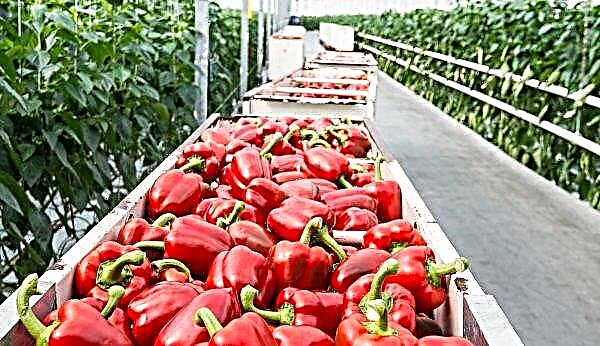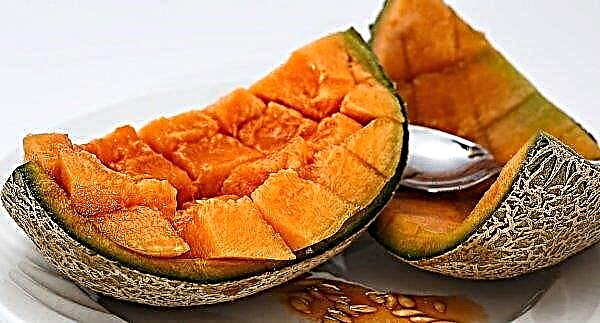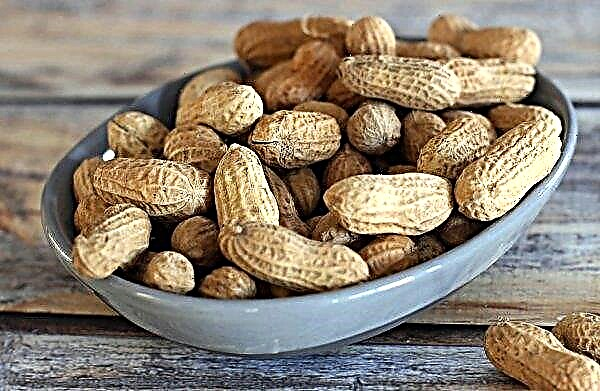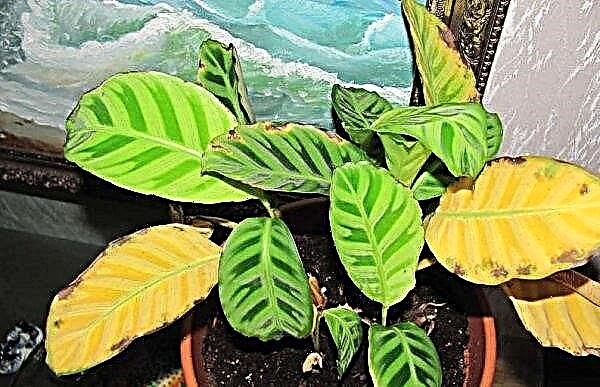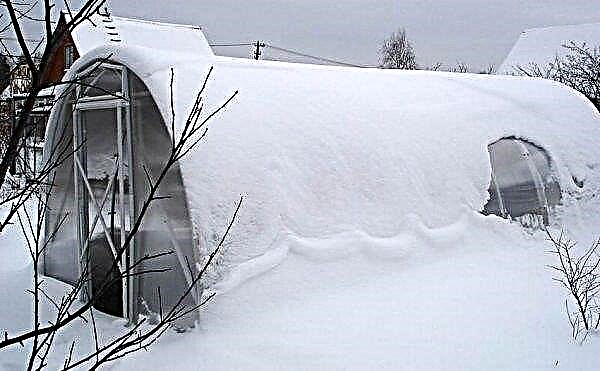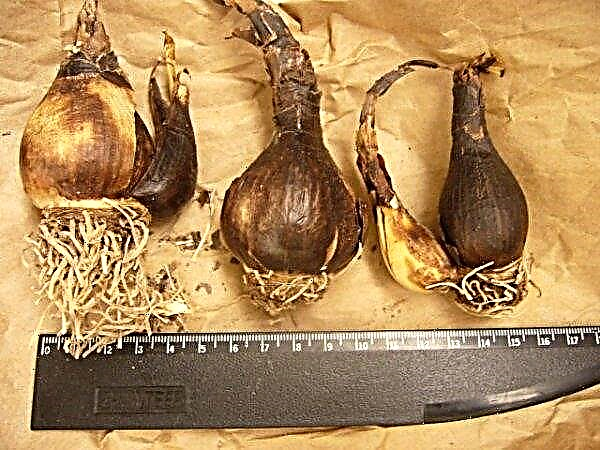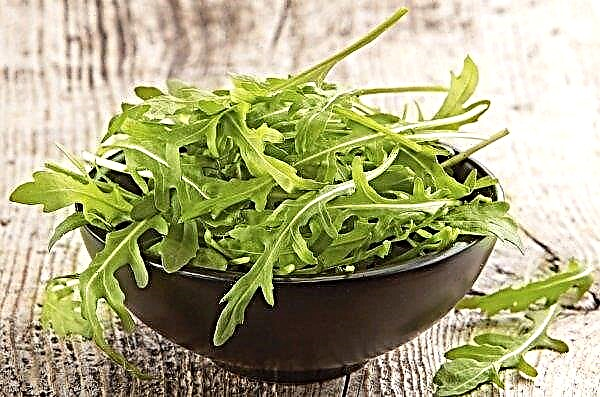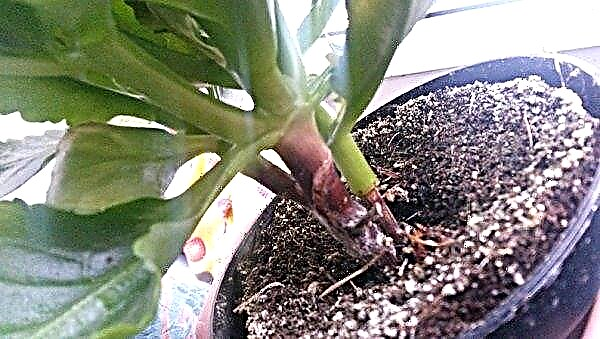Hydrangea is one of the most popular ornamental shrubs used in landscaping. An unusually spectacular bush is characterized by long and late flowering, while most of the ornamental plants have already faded.
Hydrangea is easy to shape, which allows it to be used in a wide variety of variations, from detached bushes to hedges. Gardeners and landscape designers appreciate its landscape qualities and its ability to decorate home gardens, gardens and parks almost year-round, thanks to the beautiful shape of a large leaf and the decorative properties of even faded dry inflorescences.
Hydrangea Hedge
Various types of hydrangeas are great for creating hedges.
- Their advantage over other types of ornamental plants is:
- late flowering;
- the possibility of creating hedges in shaded areas with acidic soils;
- excellent decorative properties;
- long flowering;
- large foliage and massive inflorescences.

Why do i need
The hedge formed by hydrangea bushes is an original landscape element that can perform various functions in a garden or in a personal plot:
- decorative (living walls from this plant can transform any site or decorate an unsightly fence);
- demarcation of several sites;
- preventing overdrying of the soil;
- protection as a screen from prying eyes;
- zoning of a garden, park, personal plot;
- hiding unsightly areas in the garden;
- protection against wind, dust and noise;
- purification of air from harmful substances;
- shadow creation;
- soil erosion prevention.
What does it look like
Depending on the selected variety, hydrangeas can create hedges of various heights:
- borders (up to half a meter high);
- low (from 50 cm to a meter);
- medium (from a meter to two);
- high (two meters and above).
With the help of this shrub, you can create picturesque hedges that retain their decorative properties all year round:
- A beautiful voluminous crown is formed due to large leaves of an ovoid shape, which in the fall are painted in a variety of colors from golden to burgundy.
- Flowering is different in duration. The first flowers on the hedge, depending on the variety, appear in the second half of May-July and decorate the plots until late autumn.
- Inflorescences in most varieties change their color during the growing season.
- In winter, dried inflorescences give the bush a decorative effect.
Often hedges with hydrangea are arranged in many tiers, combining them with other stunted plants in the foreground.
What types of hydrangeas exist to create a hedge
Hydrangea is incredibly decorative: the shape of the bush, large leaves, luxurious inflorescences leave no one indifferent. Landscape designers often use hydrangea as a win-win option for zoning, creating hedges and various compositions in areas.
Check out

To create a fence, panicle and tree varieties are the best choice, the advantages of which are:
- spreading crowns;
- large inflorescences;
- variety of shades;
- strong shoots that can hold heavy flowers;
- the ability to change the color of flowers throughout the season;
- rapid increase in vegetative mass;
- long flowering.
Panicled hydrangea looks the best in hedges, which differs from the tree in more elongated inflorescences, among which both low-growing and tall varieties are used:
- Bobo - a dwarf variety of hydrangea, which does not exceed a height of 70 cm and a diameter of 50 cm. It has rich green foliage and snow-white flowers, which may have light lemon or pink hues. The most lush flowering occurs in the period from July to September, although the bush blooms in June.

- Limelight - refers to tall bushes, the height of which can reach 3 m. It has very durable shoots that do not bend under the volumetric caps of flowers. It is considered one of the most suitable varieties for creating hedges; it blooms with proper care from July to September.
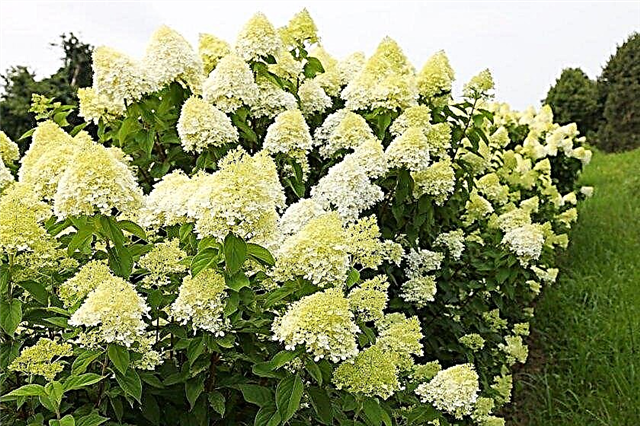
- Vanilla fraise - One of the most beautiful representatives of the species, the huge pink inflorescences of which look like a horn with ice cream. The beginning of flowering is observed in the second summer month. During flowering, the color of the flowers changes from dark pink to white. The shrub is distinguished by a spreading crown, reaches a height of 1.5 m.

- Early sensation - has a spreading crown, grows up to 2 m in height. It blooms from spring to the first frosts, changing the color of inflorescences from pale pink to dark purple. In addition to prolonged flowering, the variety is also valued for its high frost resistance (up to -30 ° C).
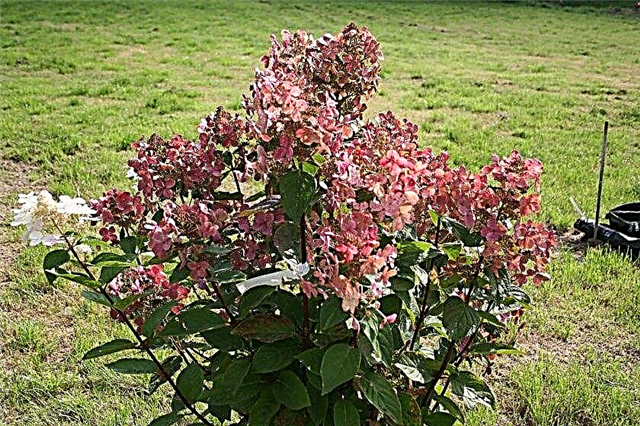
- Phantom - is a champion among hydrangea varieties both in the height of the shrub (with proper care it can reach 2.5 m), the length of the brushes (up to 40 cm), and the life expectancy (in one place the plant can live up to 40 years). Phantom pleases with lush flowering and a sweet honey aroma from June to frost.
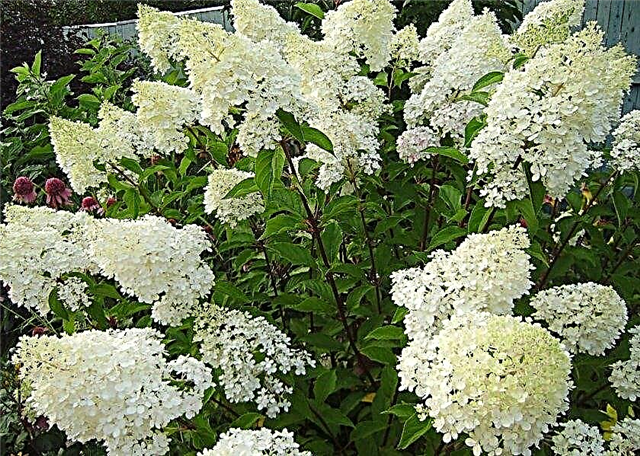
- Wim's red - it will decorate any garden from spring to autumn thanks to spectacular dark green leaves with a red tint, which in the fall delight with a variety of colors: from purple to bronze, cherry, yellow and orange. Openwork inflorescences, initially pink, gradually change color to wine red.
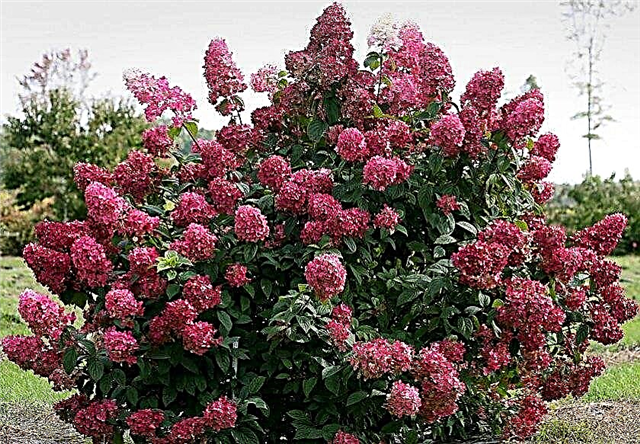
Among tree hydrangeas with corymbose inflorescences, the most suitable for arranging hedges are varieties such as Sterilis and Grandiflora, which grow to a height of 2 m and bloom in white or cream balls.
Landing
Planting a hedge requires special attention. It will be useful to first draw up an accurate plan that will take into account the location of the structure, indicating the holes and calculating the number of plants needed. It is better to buy seedlings in specialized stores or from trusted sellers.
Did you know? It is possible to prevent the drying of the hydrangea root system by pouring a small amount of hydrogel into the hole during planting, which will retain moisture in the soil.
Seat selection
The choice of a place for planting hydrangea in a hedge is of great importance in order for the plant to reach its maximum potential.
Hydrangea prefers:
- afternoon penumbra, morning and evening sun, feels good in the openwork shade of trees;
- nutritious, acidic soil with good drainage;
- high humidity of the soil and air.

It is not necessary to arrange a fence in an open, unprotected from the daytime sun space and in places where water will stagnate. The hedge on a slightly elevated area in openwork shade will feel best.
When creating multi-tiered hedges, it is recommended to combine hydrangea with plants that grow well in acidic soil, such as:
- azalea;
- heather;
- Asiatic Lily
- rhododendrons.
When creating compositions with other shrubs requiring soil with an alkaline reaction, it is necessary to create certain conditions for them.
Landing time
Depending on the type of root system and the planting area, hydrangea can be planted:
- in September - in the southern regions (plants have time to take root before frost and will bloom next summer);
- in spring - in cold regions and the middle lane (planting is done after the end of frost in warm soil);
- open root system (if the plants were grown in a greenhouse) - in the spring;
- with closed root system (in containers) - in any month of the warm season.

Soil preparation
The shrub is quite picky about the soil:
- acidity should be 5–5.5 pH;
- the soil must be nutritious and fertile;
- the soil must be well breathable for a sufficient supply of oxygen to the roots;
- maintaining soil moisture is an important condition for the development of the plant, however, the bush does not tolerate stagnation of water.
Before planting hydrangea in a hedge, the following actions must be performed:
- Dig the area onto one bayonet of a shovel.
- Add organic fertilizers, which are best suited for peat, superphosphate and humus.
After that, you can start preparing the landing pits.
Landing pattern
Planting a hedge includes the following steps:
- Prepare seedlings: prune long roots and, if necessary, soak the seedlings.
- Soak plants with a dried root system for a day in water (any growth stimulant can be added to water).
- Dip the prepared plant into a mash of clay and water.
- Dig holes 30–50 cm deep and wide, depending on the size of the root system of the seedling. For planting a hedge, the distance between the pits should be about 1.5 m.
- Mix soil with organic or mineral fertilizers, add sand and peat.
- Pour the prepared soil with fertilizers and sand with a knoll into the hole.
- Put a seedling in the center of the hole, level the roots with your hands and fill it with the remaining nutrient mixture.
- Compact the soil. It is important that the root collar is at ground level.
- Water the bush abundantly.
- Mulch. As mulch, peat can be used, which is lined with a layer of about 5 cm.
- During spring planting, cut annual shoots into 3-4 buds.
Features of hydrangea hedge care
In order for a live fence to please with long flowering and large luxurious inflorescences, when caring for it, it is necessary to take into account the demands of the shrub for the quality and moisture of the soil.
Watering
Ideal conditions for the plant are:
- watering - twice a week;
- the volume of water is 3 buckets per 1 bush.
But in order to prevent waterlogging and stagnation of moisture at the roots, one should take into account such conditions that reduce the frequency of watering, such as:
- amount of rain;
- the presence of mulch.
 For irrigation, it is necessary to use rain or settled water. It should not contain chlorine. In order not to harm the plant, watering must be done very carefully, preventing moisture from entering the foliage and inflorescences.
For irrigation, it is necessary to use rain or settled water. It should not contain chlorine. In order not to harm the plant, watering must be done very carefully, preventing moisture from entering the foliage and inflorescences.
Top dressing
In the year of planting, the plant does not require top dressing.
In subsequent seasons, hydrangea hedges should be fed 3 times:
- After the first shoots appeared. Apply any complex mineral top dressing.
- At the beginning of the formation of the first buds. Depending on the selected variety - this will be the beginning to mid-June. To do this, 100 g of a mixture of potassium sulfide and superphosphate in a ratio of 7: 4 must be diluted in 10 l of standing water and pour under a bush.
- In the last summer week, pour mullein solution. For its preparation, manure must be poured with three times the amount of water and insisted for a week. The obtained concentrated infusion before use must be diluted with water in a ratio of 1 part infusion to 10 parts of water.
Mulching and loosening of soil
To avoid the appearance of a dense, dry crust, which prevents air from reaching the roots and intensive evaporation of moisture, it is necessary:
- Periodically loosen the soil in a radius of 0.6 m around the bush (at least three times per season). The recommended depth of cultivation is 7 cm.
- In the process of loosening, remove all weeds that reduce the nutritional value of the soil.
- Loosened soil around the hedge should be mulched to prevent evaporation of moisture and the appearance of weeds. The material for the mulch is crushed pine bark, used coffee grounds, peat moss.
Important! Mulch can alter the acidity of the soil. Knowing the properties of hydrangea to change the color of flowers depending on pH, to obtain flowers inherent in the variety, it is best to mulch a hedge of panicled hydrangea with inorganic materials - pebbles, stones and others, which will also give additional decorative composition.
Depending on the selected material for mulching, form its layer. Organic mulch is layered with a layer of 5-8 cm, inorganic - 3-5 cm.

Plant pruning
Pruning is an integral part of caring for panicle hydrangea in the hedge. Pruning begins in the spring, when the bush reaches the age of four. It is undesirable to cut hydrangea in the fall, since this weakens it significantly and can cause freezing.
The purpose of cropping is:
- providing abundant flowering and large flowers;
- the formation of hedges of the correct form;
- rejuvenation of the bush.
Formative pruning includes the following steps:
- Removing thin shoots growing inside the bush and cutting them “into a ring”.
- Cutting large shoots to a height of two to three buds.
- Removing weak, dry and damaged branches.

Anti-aging pruning involves selecting from 6 to 10 strong branches on a bush and cutting out all other branches. This procedure must be performed annually.

Diseases and Pests
Hydrangea is a resistant plant and does not get sick too often. However, if improperly maintained, it may be exposed. chlorosis, rot and Septoria. In caring for this crop, the prevention of these diseases is of great importance, which consists in choosing the right place for planting, mulching, and treating with fungicides.
As for pests, hydrangea is most often invaded aphids, spider mite and gall nematodes. To combat them, special insecticides are used, as well as spraying with folk remedies: tobacco dust infusion or soap solution.
Panicled hydrangea is an unusually luxurious shrub that is often used to create hedges. The advantage of this plant is its flowering time. When almost all plants have faded, huge inflorescences continue to please the eye and exude a wonderful aroma. Despite all the capriciousness of the plant, subject to simple rules for the care of hedges, it will not cause much trouble even for beginner gardeners.








